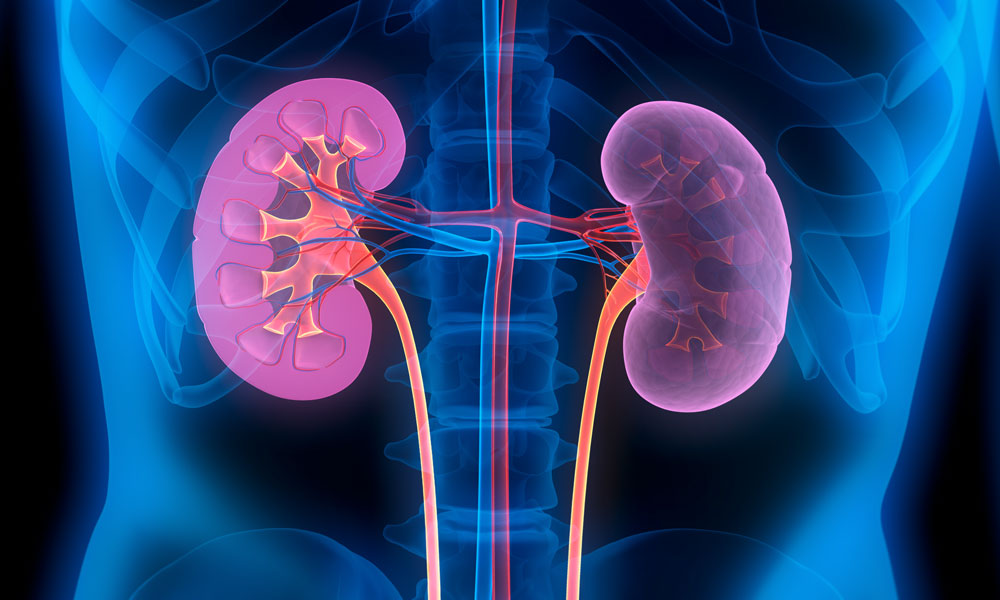In 2020, CARB-X launched several Portfolio Acceleration Tools (PATs) to develop a higher-level understanding of common issues facing developers, create efficiencies across multiple funded product developers, and create potential funding calls around focused areas of innovation and development. Outcomes from the PATs are also intended to benefit the larger AMR community and accelerate the development of products for patients. Below are some examples.
Predictive and Translatable Nephrotoxicity Models
Nephrotoxicity is a common side effect of many classes of antibacterial drugs. Though there is plenty of literature on nephrotoxic drugs, thorough evaluations of the extent of toxicity is neither well-documented nor consistent, and the “killer” combination of in vitro and in vivo assays to assess baseline nephrotoxicity and to guide optimization remains elusive. Knowledge of the nephrotoxicity of a certain drug can be a competitive advantage for companies developing similar drugs. If a competitor learns the extent to which the competition’s drug is toxic after years in development, they can incorporate that knowledge into development of their own drug and catch up to the competition. As such, historically it has often been in drug developers’ interests not to share nephrotoxicity data.
As CARB-X’s first PAT, CARB-X sought to take groups of known compounds – including candidates that had failed in development, in human clinical trials and in use in the market today – and to test these compounds using several dosing regimens in multiple preclinical models in an attempt to develop improved predictive models. These models could then be used by developers to compare the toxicity of their compounds.

SRI International, supported by the US National Institute of Allergy and Infectious Diseases (NIAID), has now launched an additional effort to build on this foundational work. Rat and mouse models have been tested, and the best models and dosing regimens are under comparative assessment. These data would provide developers with guidance on how to test their compounds to determine which ones are likely to be nephrotoxic, so that they can more quickly discontinue their development and integrate the information into their ongoing medicinal chemistry programs.
Susceptibility and Early Evaluation of Resistance Risks
During the process of antibacterial drug development, the molecule being developed is tested and evaluated against panels of bacterial strains. Bacteria evolve over time under selective pressure and develop ways to defend themselves against antibacterial drugs. New variants can emerge frequently which contributes to the growing threat of bacterial resistance. (Resistance is also growing due to the over-prescription of antibiotics; learn more about stewardship here.)
It is important to evaluate the level of activity of a compound against contemporary and diverse isolates to understand the potential breadth of coverage against a target species. If it is an early-stage program, it is important to set a baseline for hits so that there are guides for an optimization campaign.

To help developers evaluate their compounds against real-world contemporary isolates, and to understand the prevalence of resistance, CARB-X set out to evaluate a panel of recent, geographically-diverse strains. A panel of 3,000 isolates covering key priority pathogens was assembled from 67 different countries including many low- and middle-income countries (LMICs). All isolates had been collected in 2019 from a variety of clinical samples (blood, sputum, urine, etc.).
Representative compounds from CARB-X developers who chose to participate were then tested against these panels along with a large number of comparator drugs already on the market. Susceptibility data and population analyses were provided to CARB-X developers on their compounds along with all the clinical comparators. These data afforded them an understanding of what differentiated their compounds from clinically used comparators. They were free to publish, present, or use these data and analyses in their IND- and IND-equivalent applications. Furthermore, CARB-X also provided developers the opportunity to select and obtain isolates from the collection to facilitate follow-up studies if, for example, a particular strain showed reduced susceptibility to their compounds.
These isolates are also available to product developers in the portfolio who are advancing preventatives and diagnostics. Exemplary of the use case, CARB-X created blinded “challenge panels” for diagnostic developers to test the robustness of both species identification and antibiotic susceptibility early. This was done so that, if necessary, an optimization campaign would have clear areas of focus.
This PAT launched in 2021, and CARB-X plans to conduct similar studies when warranted by a critical mass of new compounds.
Antigen Conservation and Epidemiology
To develop a vaccine, product developers must select which antigenic substance elicits a protective immune response to add to their vaccine. One challenge vaccine developers face is to ensure that their antigen is sufficiently conserved across diverse representative strains of the bacterial species they are targeting.
Genome sequencing is a powerful way to understand the level of conservation and epidemiological relatedness of different isolates. Seeking a way to help product developers obtain an early understanding of antigenic variation that may exist, CARB-X leveraged its partnerships to begin building databases of genomic sequence information from nearly 7,000 isolates of the key priority pathogens along with key metadata. Customized bioinformatic work packages are performed for the product developers to help them in their epidemiological understanding.

CARB-X is continuing to build and expand these databases, however a significant gap exists with access to genomic data of contemporary isolates from many African countries. CARB-X has initiated a collaboration with the University of KwaZulu-Natal to collect and characterize clinical isolates of key bacterial species from countries across Africa. This work will initially focus on the collection of four key species (K. pneumoniae, E. coli, S. aureus, and A. baumannii) from different clinical indications with a strong focus on bloodstream isolates to support CARB-X programs focused on neonatal sepsis. The whole genome sequence data and associated susceptibility information will be added to our curated database to improve the customized bioinformatics support that is available to CARB-X product developers.
Animal Models of Translation
Animal models play a vital role in developing antibiotic agents. They enable proof-of-concept efficacy investigations and provide valuable information for clinical dose projections. But extensive discrepancies exist, particularly in pneumonia models. This makes it difficult to reproduce data and compare results across laboratories.
A standard pneumonia model would help solve these problems by making uniform:
- antimicrobial efficacy data interpretation, and
- selection of dosing regimens with a translational value.
While most investigations use plasma targets – due to a simple study design to denote efficacy – the translational application of these targets may not be reliable for agents with discordant ELF penetration between humans and mice. Thus magnitudes of plasma PK/PD indices required for efficacy determined in murine pneumonia models may fail to predict clinical outcomes.
Furthermore, clinical data are not routinely back-translated in lung models to help determine whether clinical parameters are recapitulated in these models. To facilitate bench-to-bedside translation and optimize the development of new agents for pneumonia, it is necessary to identify and set reliable preclinical investigation standards.
The Innovative Medicines Initiative (IMI) Antimicrobial Resistance (AMR) Accelerator has selected a protocol for different laboratories, so study results can be compared. Data will be used to create a standard methodology for a neutropenic pneumonia model. CARB-X and the Center for Anti-Infective Research and Development (CAIRD) will assess in vivo efficacy of human-simulated antibiotic exposures in the IMI pneumonia model against a defined set of Klebsiella pneumoniae and Pseudomonas aeruginosa strains. Back-translation of the clinical exposures based on plasma and ELF from healthy volunteers and patients will provide additional information about the predictability of the IMI pneumonia model.
These standardized and reproducible lung infection model studies could help predict clinical success. This is crucial to CARB-X product developers. Most are developing products that address lung infections, among the greatest medical needs. CARB-X will publish its methodologies, so anyone can use them in different laboratories around the world to demonstrate their proof-of-concept. CARB-X will also make its standard bacterial strains available, so developers can use them to further strengthen these models.
Adjuvants
An adjuvant is a substance that is paired with an antigen in a vaccine to provoke a stronger immune system response. Today, not many are approved for human use because they are not inert substances and need to be tested for safety before use. CARB-X is working with NIAID to gain access to novel adjuvants for CARB-X vaccine developers to use in their animal models. Issues of patenting a vaccine that uses adjuvants developed from public funds is a barrier that CARB-X is working to overcome.



